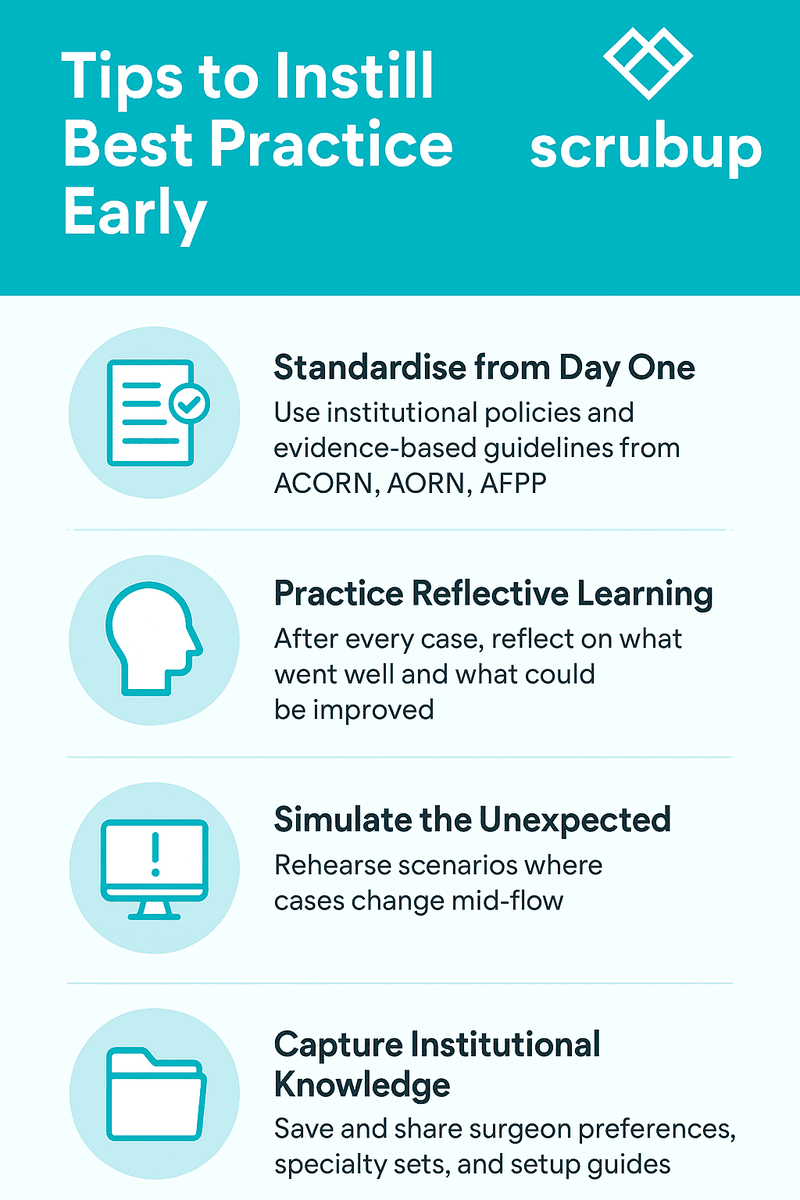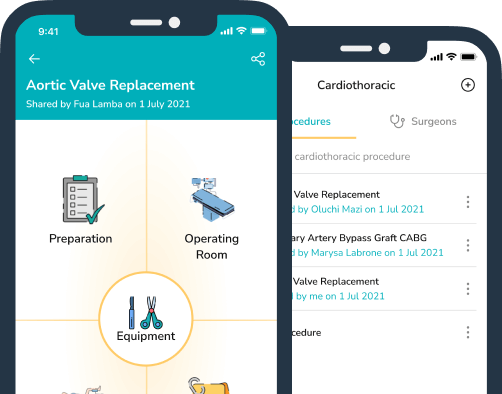📚 Why Time and Education Matter in Instilling Best Practice
Posted at 30 June 2025 in Clinical Governance,Healthcare Technology,Perioperative Education,Professional Development,Surgical Best Practice by Marrianne
Embedding best practices into clinical skills requires deliberate time investment, structured education, and ongoing reinforcement. Research indicates that:
-
🔍 Deliberate practice over time improves clinical performance.
Ericsson et al.’s seminal work on skill acquisition demonstrates that expert performance arises from structured, repetitive practice—not merely experience. In surgical settings, this entails building skills through repeated exposure to procedural norms, instrument setup, and workflow protocols.
(Ericsson KA et al., 1993. Psychological Review) -
🕒 Operating rooms are complex environments with high cognitive demands.
A prospective observational study by Göras et al. (2019) found that surgical teams performed an average of 64 tasks per hour, with nearly half involving communication. Multitasking accounted for 48.2% of the time, and interruptions occurred at a rate of 3.0 per hour, predominantly due to equipment issues. These findings highlight the necessity for structured education and time allocation to manage the complexities of the OR effectively.
(Göras C et al., 2019. BMJ Open) -
🧠 Simulation and structured education improve retention of best practices.
A study in the Journal of the American College of Surgeons found that OR team members who engaged in simulation-based education were more likely to adhere to best practice protocols, such as surgical safety checklists and aseptic setup techniques.
(Barsuk JH et al., 2009. J Am Coll Surg) -
📈 Structured learning platforms help consolidate complex clinical knowledge.
Digital tools that reinforce policy-based workflows (like ACORN, AORN, AFPP) assist learners in absorbing, applying, and reflecting on clinical procedures in real-time. Platforms like ScrubUp bridge the gap between formal education and day-to-day clinical needs.
Final Thought (Updated):
By investing time in education and reinforcing evidence-based standards, we don’t just teach a skill—we nurture clinical judgment, adaptability, and professionalism. Whether it’s the first surgical tray setup or a case pivot under pressure, clinicians trained with time and structure are best equipped to deliver safe, efficient care.
References:
https://psycnet.apa.org/record/1993-40718-001
https://pubmed.ncbi.nlm.nih.gov/31097486/
https://pubmed.ncbi.nlm.nih.gov/19667306/

Recent Articles
✈️From Pilots to Perioperative Practice: Why Organisation and Readiness Save Lives in the OR
28 October 2025
Why Interruptions in the Operating Room Put Safety, Efficiency, and Staff Wellbeing at Risk
26 September 2025
Categories
More articles from Clinical Governance,Healthcare Technology,Perioperative Education,Professional Development,Surgical Best Practice
View All🌟 Building Competence in the OR Takes Time—And Pays Off
Instrument and circulator nurses and technologists perform some of the most complex, high-pressure roles in healthc...
27 October 2025
Read moreJewellery, Piercings & Metal in the Operating Room – The Hidden Burn Risk
Why This Matters Electrosurgical units (ESUs)—both monopolar and bipolar—are essential to modern surgery, bu...
12 August 2025
Read more🚫 Artificial Nails in the Operating Room: More Than a Policy—It’s a Patient Safety Imperative
In perioperative environments, details matter—especially those that impact infection prevention and patient safet...
30 July 2025
Read more

